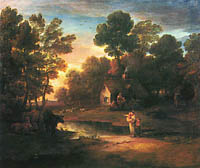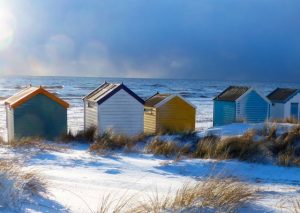Two of Britain’s greatest painters, John Constable and Thomas Gainsborough, were born within 10 miles of each other in some of the most fertile and rich farming land in England. They were both deeply inspired by their native Suffolk, and a large part of South Suffolk/North Essex around Flatford Mill has adopted Constables name – ‘Constable Country’ – as much of the area is reflected in his work. Gainsborough also left a strong legacy, and there’s museum dedicated to him in Sudbury, where he was born, as well as this impressive statue in the market square
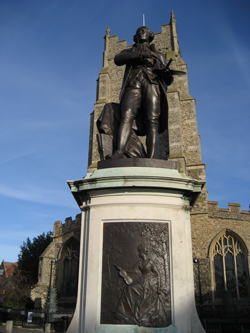
John Constable was born in 1776 at East Bergholt, the son of a prosperous mill owner in Dedham Vale. John’s chosen profession of painting was frowned upon by his family so he tried to combine his love of painting with working in the family business. However his spare time was spent painting his surroundings in Flatford, Dedham and East Bergholt, and he was eventually allowed by his father to attend the Royal Academy in 1799. He was well aware of Gainsborough’s work and they were among the formative influences in his work ‘I fancy I see Gainsborough under every hedge and hollow tree’ he wrote in 1799 from Ipswich.
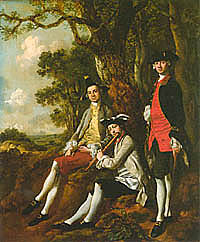
Thomas Gainsborough was born in 1727 in the market town of Sudbury. In order to maintain himself he took portrait commissions and copy paintings as well as religious works, but landscapes were his real love. At the time landscapes were not fashionable and there was no real demand for them. Gainsborough managed to create new a demand through founding the realist tradition of landscape painting in the UK, in contrast to the imaginary landscape scenes of 18th C painters. Gainsborough moved to London in 1774 and gradually his realistic images of country scenes, pretty cottages, animals, churches and open skies gained wide acceptance. Partly this was as a result of a nostalgia for the way the countryside had been, as mechanisation was beginning to replace more traditional form of farming, and the Industrial Revolution was drawing more and more people away from the fields.
Over the course of his career Gainsborough painted over 500 portraits of the English aristocracy, but he considered himself a landscape painter despite only producing some 200 landscape canvasses.
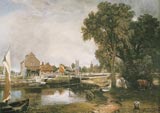
Constable rejected the easy option of a position in his family business and chose instead to concentrate on his painting. However he did not become self sufficient in this as he was also reluctant to take on portrait and house commissions, preferring instead to concentrate on landscapes. His early landscape work was a faithful reflection of the country scenes around him, as a celebration of the rural landscape. When he was forty his father died and left him a private income, which enabled him to concentrate on his artistic development. He remained true to reflecting harmonious and pleasant aspects of the landscape, rather than the dramatic and stormy work of his contemporary, Turner. Constable wanted to make a deep and patient study of nature, and concentrated on this depth rather than painting new scenes. The poetry of Wordsworth was soon to reflect a similar respect for and study of nature.
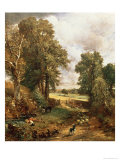
At the age of 53 Constable was elected to the Royal Academy, which was unusual for a landscape artist. His work was sought after and he became one of the greatest influences on the art of his time. But he never wanted to leave England and, unlike Turner who drew his inspiration from Italy, was content to study the landscape of the Stour Valley. And when you come and visit Constable Country you’ll see why!
Please see our article on The River Stour for more information.
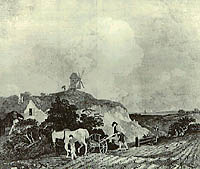
Gainsborough’s House can be found in Sudbury – see Gainsborough’s House
A major display of oils and drawings by Gainsborough and Constable can be found in the Wolsey Art Gallery at Christchurch mansion, Ipswich, which is open to the public all year round. Call 01473 433554.
The Stoke by Nayland Hotel, Golf And Spa has 2 Golf Courses created in the early ’70s both the Gainsborough and Constable golf courses are well-established amongst lakes, streams and mature woodland.
Activities in the area
Accommodation and Eating Out in the area
Do you love Suffolk art, or Gainsborough and Constable in particular? Perhaps you know something interesting or unusual about one of them? Please send all comments and reviews to [email protected].
